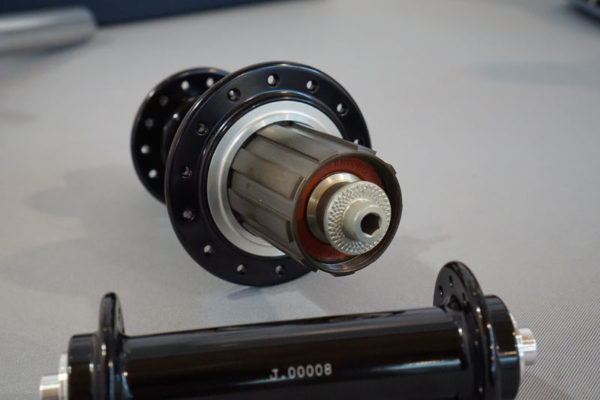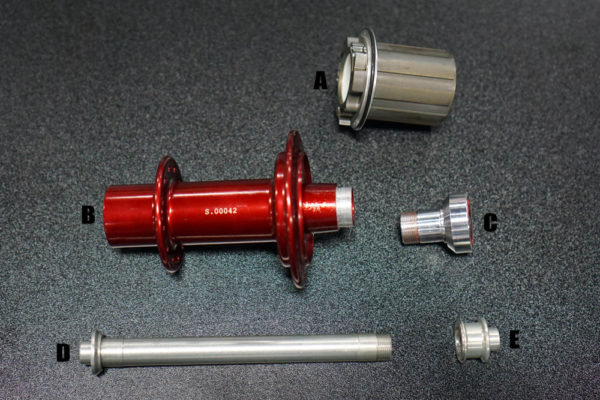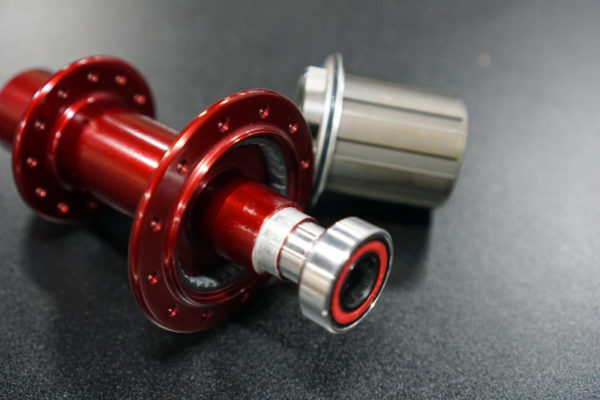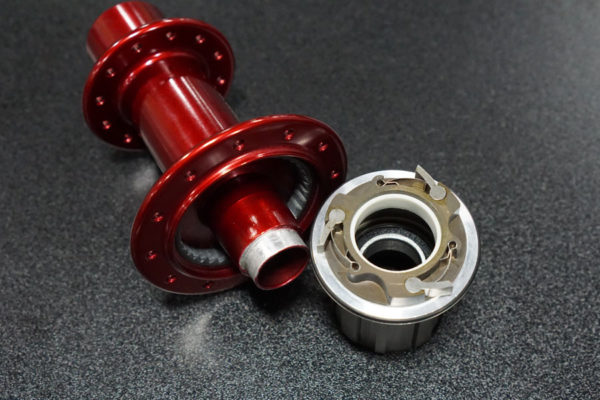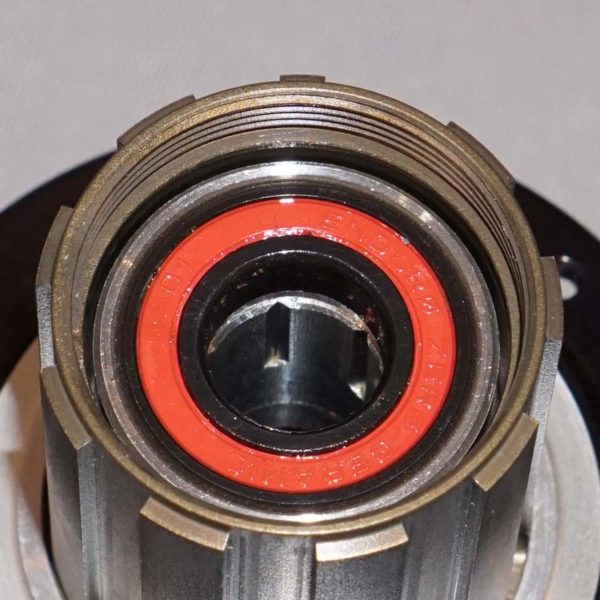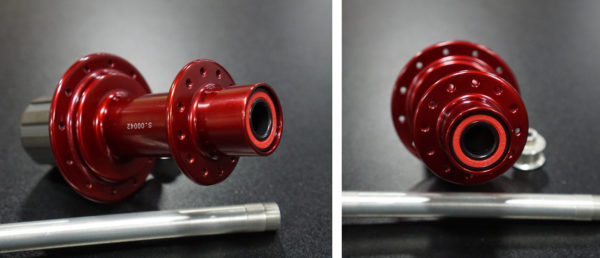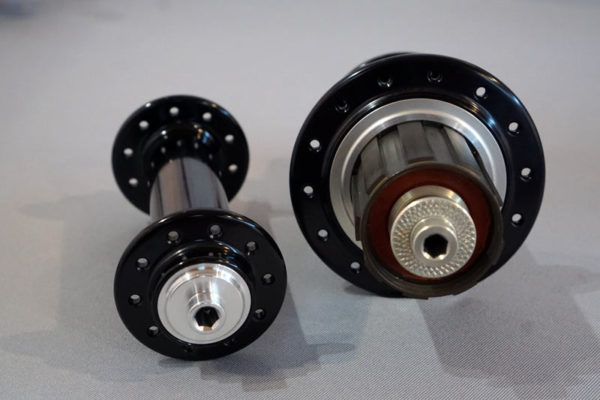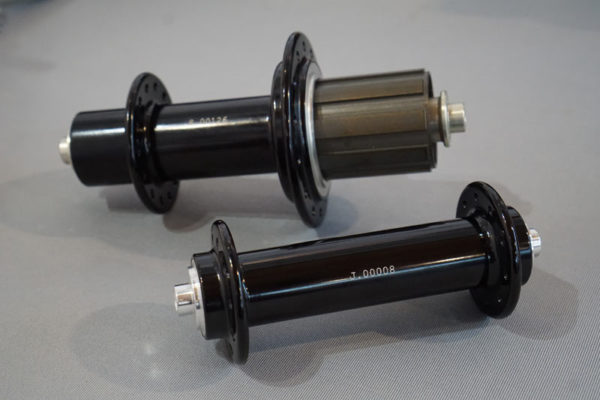See the bearing behind the end cap in the pic above? That’s not the freehub bearing, that’s the axle bearing, which is independent of the freehub. The design is unlike any other, and it’s a project from Alchemy Wheel Work’s Jeremy Parfitt that’s being made by Wheels Manufacturing.
Truth be told, these hubs aren’t exactly new. We saw them six years ago at Interbike, and not much has changed in the interim…except that now you can actually order them. Key updates from the original are a threaded, enclosed bearing cup for the driveside that no longer puts the bearing in direct contact with the freehub body, eliminating pedaling stresses from harshing the ride, and vice versa…
What makes the Orc UL rear hub special is that the driveside axle bearing sits on the very outside edge of the axle, very close to the dropout. In most (every) hub, the driveside axle bearing sides inboard of the pawl/ratchet mechanism, meaning about 35-40% of your hub is not fully supported on the axle. That means extremely hard efforts or unusually stressful bending (think full suspension bikes) can “bend” the hub, causing less-than-ideal engagement and uneven stresses on the system that cause friction and drag. The challenge in putting the bearing on the far outside is, of course, that the freehub body’s insides are much smaller and are usually filled with two bearings of its own.
In the image above, the Driveside bearing sits inside it’s own shell (C), which threads directly into the hub shell (B). The axle (D) runs all the way through, with both bearings resting directly on it. An end cap (E) threads onto the other side of the axle. To assemble it, the freehub’s bearing is pressed onto the silver part of the red shell (B), then the freehub body (A) is slid over it, then the axle bearing (C) is threaded into place to lock it all together.
The freehub body rolls on a single bearing, and it’s completely isolated from the axle.
You’ll need a large allen wrench to unthread the driveside axle bearing’s cup.
The non-driveside bearing is pressed directly into the shell and sits on the very edge.
The front is designed the same way, with bearings pressed into the very outside edges of the shell. Another benefit to their overall design is that the flange spacing has been pushed out as far as possible for better bracing angles (stronger wheels). Claimed weights are a mere 200g for the rear, 66g for the front.
So, what’s changed from the original spotted years ago? This, from Jeremy at Alchemy:
It is a revised design. The small number of failures of the first generation ORC-UL hubs was not due to an inherent problem with the design. It was due to the placement of a bearing shoulder at the base of the post. This created a stress riser which caused the problem. The revised design has eliminated the stress riser and increased the diameter and wall thickness of the post.
To confirm that the problem had been solved, I sent a number of wheels with the revised hub and the first generation hub as a control to ACT labs in California. They ran what they called the European standard test. All of the hubs (including the control) passed the first test. I then asked them to increase the load significantly above the standard (this amounted to a rider weight of 330 pounds). This test caused the control hub to fail, but not the revised hub. They kept running the test until rim failure began. So, the new hub survived a load lest that was significantly harsher than the Euro standard.
Wheels Mfg will make the body, shell, axle, end cap, will use Enduro bearings and source the pawls and ratchet ring elsewhere. They’ll eventually do thru axle and disc brake versions, too, but for now it’s standard 100mm front/130mm rear spacing and SRAM/Shimano 10/11 freehub bodies only. Retail is $440 for rear, $180 front. Choose from silver, black or red and 20, 24, 28 and 32 hole drillings on both, plus 16 and 18 hole options up front.
